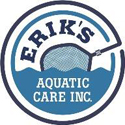The Hurricane Prep And Recovery Blog

Living in a warm, tropical climate brings plenty of promising benefits to health, peace of mind, and hospitality. The Sunshine State also brings with it humidity, bugs, and some unpredictable weather. Fortunately, we don’t have to worry about the worst of the worst such as earthquakes, tornadoes or freezing blizzards. Hurricane and tropicals storms are two of the major concerns all Floridians have during the hurricane season. We all saw what Harvey did to Houston and the Texas coastline. Irma destroyed the Florida Keys and devastated Puerto Rico. The best thing to do if you’re a Florida homeowner is to prepare and have a plan of action. This blog will act as your hurricane prep and recovery guide—discussing prepping your pool for storms as well as and how to recover.
Hurricane Prep For Various Pools
If you have an above-ground pool, check to ensure it’s structurally secure for storms with potentially high winds. High winds can easily pick up debris and launch pieces into your pool walls. They could effectively drain your pool in a matter of minutes. Do you have a cover or some type of protective barrier for your above ground pool?
If you have an in-ground pool, your pool is a bit more secure from damage. You should still have a taught pool cover applied before the storm nears your property.
Regardless of pool type, your water may be more vulnerable if flooding occurs. Flooding can bring a slew of unwanted creatures and debris to your pool. These include but are not limited to sand, dirt, algae, phosphates, bacteria, marine organisms, and more. Even though covers may not fully protect against flooding, they can help tremendously with waste and refuse.
Post-Hurricane Pool Recovery
If flooding HAS NOT occurred, it’s safe to start the following recovery process. The first step is to thoroughly inspect the structure of your pool. Ensure there’s no damage to the pool filtration system and walls/edges of the pool. Remove all the larger debris you can including branches, brush, rocks, etc. Assuming your pool’s vacuum and filter are unharmed, use it to your advantage to vacuum out the small debris in your pool. A word of advice: clean your filter and empty your skimmer baskets between each cleaning. It may take a few cleanings to remove everything from your water. Do not add chemicals thinking it will jumpstart the cleaning process! The water needs to be completely cleaned of debris before shocking it with chemicals.
Chemical Dump
Flooding or, at the very least, high levels of stormwater, will quickly destroy the chemical balance of your pool. You’ll need a major shock of chemicals to bring the balance back to optimal levels. For chlorinated pools, we advise adding 3 pounds or 3 gallons of chlorine per 10,000 gallons of pool water. This process is referred to as super-chlorination, for good reason.
You’ll need to continue the process of adding chlorine and cycling it through your system for at least 24 hours. Don’t be surprised if it takes 48 hours. If the chemical balance is still off, continue adding chlorine and cycling until you reach the 3: 10,000-gallon ratio.
Optimal Chemical Levels
- Total Alkalinity (TA) should be kept between 80 and 120 ppm.
- pH should fall between 7.2 and 7.8.
- Total Water Hardness needs to be stable between 200 and 400 ppm.
- Lastly, the cyanuric acid should be in the range of 30-50ppm.
If flooding HAS occurred, wait for the flood levels to recede. If possible, remove as much water as you can until it reaches a manageable level. Your next step is to start on the list above.
Erik’s Aquatic Care is always here to answer questions you may have as a current or future pool owner. Cheers!


0 Comments